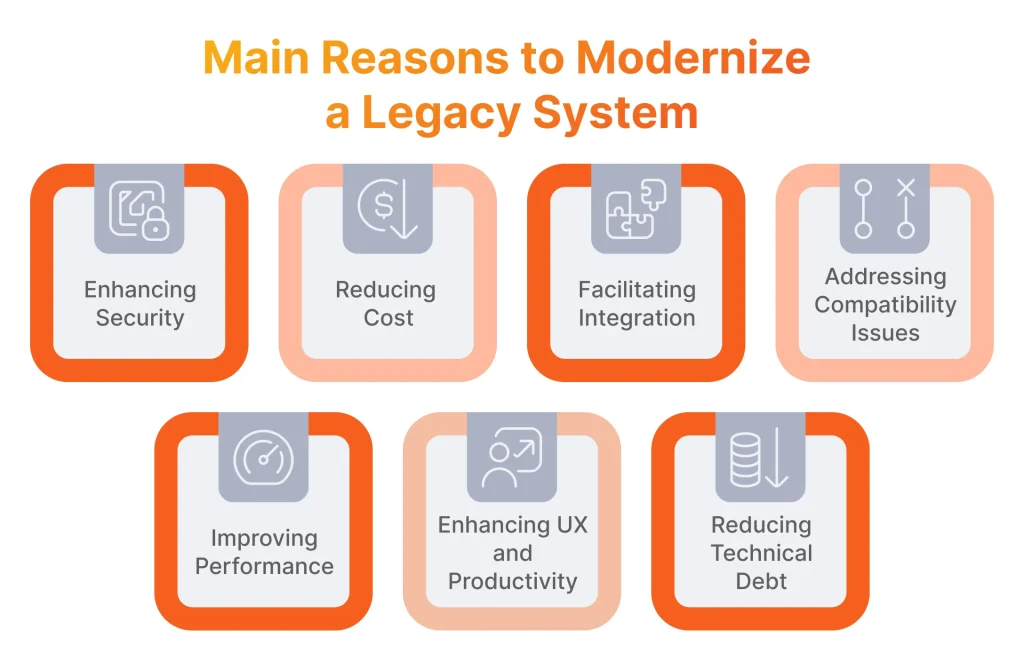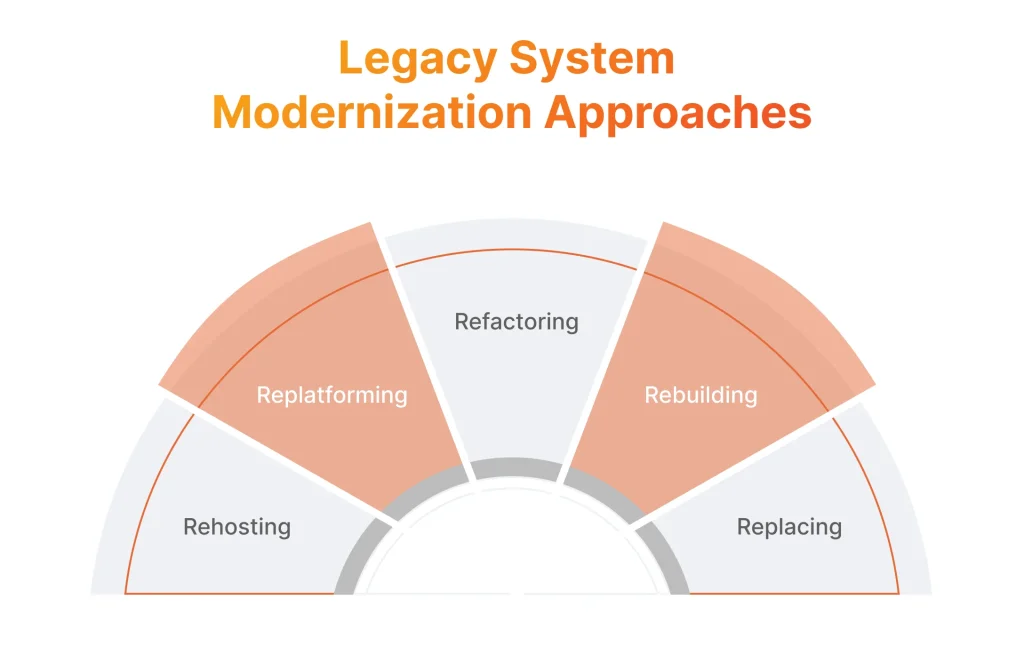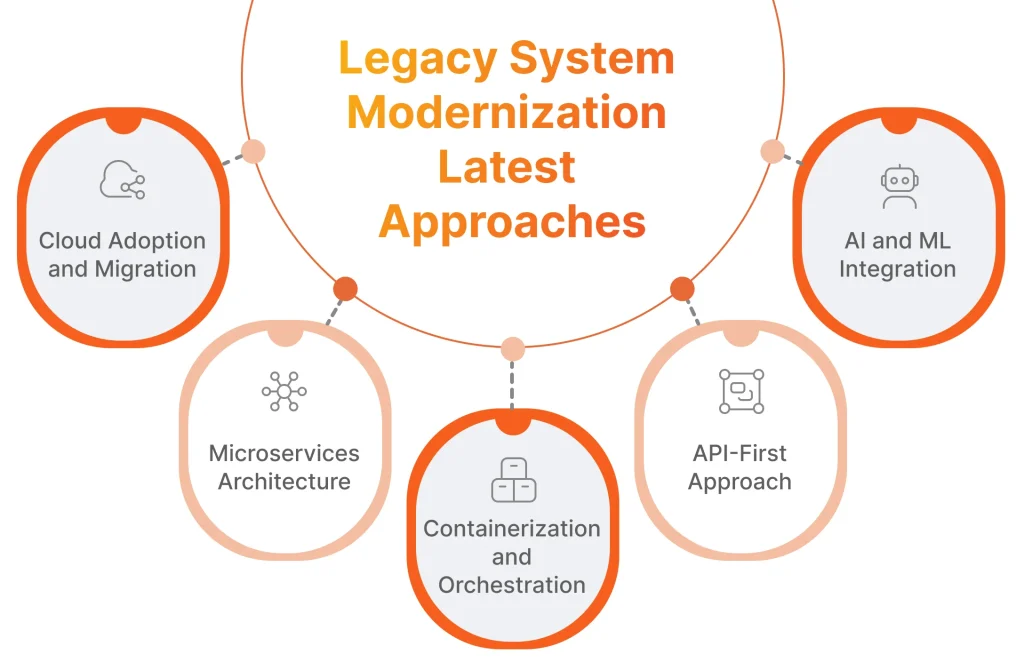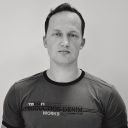Legacy systems, once the backbone of operational efficiency, now pose significant challenges to sustainability in an era defined by digital transformation. As per the findings of the Accenture report, 67% of executives have indicated that they’ve formulated an action plan aimed at adopting and scaling sustainable business practices throughout their entire organization. As businesses grapple with the imperative to adapt and innovate, legacy system modernization emerges as a cornerstone of sustainable growth.
At its core, this endeavor is about more than just updating outdated infrastructure – it’s about unifying data to create a foundation for future success. This article explores the vital role of modernizing legacy systems in propelling organizations towards business productivity.
Legacy System Definition and Characteristics
A legacy system refers to outdated software or hardware that is still in use within an organization. These systems may have been developed years ago using older technologies, languages, or platforms. Yet, since the technologies evolve fast, these systems now often lack the flexibility, compatibility, and functionality of modern solutions.

Oleksandr Boiko
Delivery Director at SPD Technology
“Despite their age and limitations, legacy systems may still be critical to an organization’s operations, housing valuable data and supporting essential business processes. However, they can also present challenges such as higher maintenance costs, security vulnerabilities, and difficulty integrating with newer technologies. Therefore, organizations need legacy modernization, involving updating or replacing these outdated systems to improve efficiency, reduce risk, and ensure continued support for evolving business needs.”
To better understand what systems are called legacy, let’s review their characteristics below.

- Outdated Technology Stack: The legacy system is built on outdated technologies and programming languages that may no longer be supported or widely used.
- Monolithic Architecture: The system has a monolithic architecture, making it difficult to scale, maintain, and modify without impacting other components.
- Lack of Documentation: Documentation for the system may be incomplete, old, or non-existent, making it challenging for new developers to understand and work with the codebase.
- Multiple Built-In Components: Numerous custom-built components and integrations tailored to specific business needs pose maintenance challenges.
- Proprietary Dependencies: The system relies on proprietary software, libraries, or hardware components that are no longer supported or difficult to replace, leading to dependency issues and vendor lock-in.
- Security Vulnerabilities: Outdated security protocols, lack of regular updates, and inadequate protection mechanisms make the system prone to security risks and data breaches.
- Inflexible User Interface: The user interface of the legacy system may be outdated, clunky, and difficult to navigate, resulting in poor user experience and decreased productivity.
- Data Silos: Data within the system may be stored in separate silos or databases, making it difficult to access, share, and analyze information across the organization.
Legacy System Common Challenges and Limitations
When your system becomes outdated, you’ll face a cascade of challenges that impede your organization’s ability to improve business operations, innovate, and maintain competitive advantage. In the following sections, we outline the challenges posed by legacy systems and the repercussions of failing to apply modernization efforts, supported by examples.

Limited Integration Capabilities
Integrating legacy systems with modern technologies or third-party applications can stumble upon compatibility issues and the absence of standardized interfaces. Legacy applications often lack APIs or support for modern integration protocols, making it difficult to establish seamless connections with other systems. Here comes troubles with data exchange, interoperability, and collaboration, hindering the organization’s ability to leverage new technologies and adapt to evolving business requirements.
Example: In the case of a retail company building a new eCommerce platform, its legacy inventory management system may lack modern APIs and integration protocols. This limitation can make it difficult to synchronize inventory data with the eCommerce website. Consequently, the company may face delays in updating product availability online, resulting in discrepancies between online and in-store inventory levels.
Limited Scalability
Outdated systems are often built on architectures that lack scalability, making it difficult to accommodate increased workload or adapt to changes in business demands. Scaling legacy applications typically requires significant redevelopment efforts, as they may be monolithic or tightly coupled, with limited capacity for horizontal or vertical scaling.
Example: A financial institution’s legacy banking system struggles to handle a surge in online transactions during peak hours. As a result, its customers experience delays and timeouts, while accessing online banking services. To address this, the institution must invest in significant redevelopment efforts to refactor the system for improved scalability and performance.
Lack of Vendor Support
With technology vendors phasing out support for legacy products and platforms, organizations relying on old software or hardware may struggle to obtain technical assistance, updates, and security patches. As a result, the organization becomes vulnerable to system failures, performance degradation, and security breaches.
Example: A manufacturing company’s legacy production planning software, no longer supported by the vendor, experiences compatibility issues with newer operating systems and hardware. Without access to technical assistance or updates, the company faces increased downtime and maintenance costs to keep the system operational.
Compliance Concerns
A legacy system may fall short of meeting modern regulatory requirements, industry standards, and data privacy regulations. This non-compliance exposes organizations to legal liabilities, fines, and reputational damage. Failure to adhere to regulatory obligations can result in costly penalties, legal disputes, and loss of customer trust.
Example: A healthcare provider’s legacy electronic health records system fails to meet the latest HIPAA regulatory requirements for data security and privacy. As a result, the organization faces potential fines and legal liabilities for non-compliance, as well as reputational damage due to concerns over patient data protection.
Cumbersome Processes
Business processes and workflows stuck into existing systems may be inefficient and inflexible, affecting organizational agility, innovation, and responsiveness to market dynamics. Legacy systems struggle with adopting automation, workflow optimization, and self-service capabilities. As a result, the organization must resort to manual interventions, redundant tasks, and delays in decision-making. Streamlining and modernizing these processes is essential for improving operational efficiency, enhancing employee productivity, and driving business growth.
Example: An insurance company’s legacy claims processing system relies on manual data entry and paper-based workflows, which causes delays in claims approval and processing. To streamline operations, the company must invest in legacy software modernization with automation capabilities and digital document management.
Reasons for Modernizing Legacy Systems
Given the rapid evolution of technology, organizations are keen to incorporate new security measures, enhance performance, implement automation, and introduce new functionality to unlock the business impact of AI and Big Data. It’s understandable that they aim to leverage these advancements through legacy modernization.
Yet, certain reasons to modernize legacy systems are deemed essential requirements. As the Statista report shows, many companies cited enhancing security and efficiency as primary reasons for modernizing their legacy applications and data in 2023. Cost reduction and improved integration, increased agility and flexibility were also among important drivers for investing in major upgrades. Let’s closely examine why some of these motivations, as well as others mentioned by our clients, arise.

Enhancing Security and Adhering to Regulatory Requirements
Security stands as one of the biggest challenges in web application development, particularly from inception, and even more so with legacy systems. The latter are particularly vulnerable to cyber threats such as malware, breaches, and unauthorized access, endangering sensitive data and business operations with potential compromise and disruption.
Legacy application modernization allows for implementing robust security measures, including encryption, multi-factor authentication, and secure coding. These measures not only minimize security risks but also facilitate compliance with regulatory standards through features like data anonymization and breach notification. By reducing legal risks and penalties associated with non-compliance, organizations can demonstrate their commitment to data privacy and security.
Reducing Cost
High operational and maintenance costs due complex architectures and specialized skills required for management are frequent issues legacy applications provoke. Modernizing them streamlines business processes, optimizes resource utilization, and offers cost-saving benefits by migrating to cloud-based solutions. This shift reduces infrastructure management overheads, avoids vendor lock-in, and entails thorough total cost of ownership considerations to ensure cost-effectiveness throughout the system’s lifecycle.
Facilitating Integration with Modern Technologies and Platforms
Lack of interoperability with newer technologies impedes business agility and innovation. Legacy modernization enables integration with modern APIs, microservices architectures, and cloud platforms, facilitating seamless data exchange, collaboration, and adoption of emerging technologies like IoT, AI, and blockchain. This allows organizations to leverage the power of data analytics, machine learning, and distributed ledgers.
Addressing Technological Obsolescence and Compatibility Issues
Over time, advancements render legacy software obsolete, hindering performance, posing security risks, and limiting innovation. Legacy systems often struggle to integrate with modern IT environments, causing functionality issues and disruptions. Thus, updating software is crucial to leverage the latest technologies, ensuring compatibility, and extending its lifespan. This involves refactoring code, adopting newer languages and frameworks, and updating dependencies.
Improving System Performance, Scalability, and Reliability
If the software experiences performance bottlenecks, scalability limitations, and reliability issues, legacy systems modernization offers an opportunity to address these challenges by optimizing existing code, embracing serverless architectures, and implementing DevOps practices. By optimizing performance, the system can handle heavy workloads efficiently, ensuring smooth operations even during peak usage periods. Scalability improvements enable the system to adapt to growing demands without compromising performance or reliability. Additionally, enhanced reliability ensures minimal downtime and improved user experience, contributing to overall business success.
Thanks to leveraging AWS and serverless architecture for dynamic scalability, increasing processing speed, we achieved operational efficiency and substantial cost savings for one of the U.S.’s largest asset management companies. Thus, their low-performing legacy platform turned into a dynamic and scalable solution with advanced features for investors.
Enhancing User Experience and Productivity
Outdated interfaces and workflows can negatively impact user experience and productivity. Modernization efforts should focus on improving these aspects by adopting intuitive user interfaces, responsive designs, and personalized experiences. This will result in increased user satisfaction and efficiency, as users can navigate the system more easily and perform tasks more quickly.
Integration with collaboration tools and mobile platforms further enhances accessibility and productivity for end-users, allowing them to work effectively from any location and device.
Reducing Maintenance Costs and Technical Debt
Legacy systems often accumulate technical debt over time due to legacy code, inadequate documentation, and patchwork fixes. Modernization initiatives aim to address these issues by refactoring code, enhancing documentation, and implementing best practices such as test-driven development and continuous integration/continuous deployment. These efforts reduce maintenance overheads by making the system easier to maintain and support.
Legacy System Modernization Techniques
So, you’ve decided to get into modernizing legacy applications, that means you are heading toward big changes in your business processes. Sure thing, you can initiate custom software development from scratch to create a completely new product that is equipped with the same or even enhanced functionality but performs better. However, if you decide to improve the existing system, there are five primary methods you can use to initiate this transformation.

Rehosting
- Technical Perspective: Rehosting is an ideal approach when the existing legacy system is running on outdated or unsupported infrastructure. The primary goal here is to migrate the system to a more modern and scalable environment without making substantial changes to the legacy code.
- Scenario: Imagine a business is currently operating a legacy enterprise resource planning (ERP) system on on-premises servers. However, the hardware and operating systems supporting the ERP system are outdated and no longer supported by the vendor. The organization faces performance issues, security vulnerabilities, and challenges in maintaining the system due to the obsolete infrastructure.
- Rehosting Solution: In this situation, modernization requires rehosting the ERP system to a cloud platform, such as AWS or Microsoft Azure. The rehosting process involves lifting and shifting the existing system to the cloud infrastructure while ensuring compatibility and performance optimization.
Refactoring
- Technical Perspective: Refactoring becomes necessary when the existing code of a legacy system is outdated, monolithic, or poorly structured. The primary objective of refactoring is to enhance the system’s maintainability, scalability, and performance by restructuring and optimizing the code.
- Scenario: Imagine a business developed a legacy customer relationship management (CRM) system a long time ago, and now struggles with its monolithic architecture based on outdated programming languages and frameworks. The monolithic nature of the system makes it challenging to maintain, scale, and adapt to changing business requirements. The organization recognizes the need to modernize the CRM system to improve its functionality, efficiency, and agility.
- Refactoring Solution: In this case, refactoring the CRM system involves breaking down the monolithic codebase into modular components, adopting modern development practices such as microservices architecture, and rewriting critical sections using modern programming languages and frameworks.
Replatforming
- Technical Perspective: It’s suitable to turn to replatforming when the underlying technology stack is obsolete or incompatible with modern infrastructure or frameworks. The primary goal of replatforming is to migrate the system to a new platform or architecture while preserving existing functionality.
- Scenario: Let’s suppose a business built an eCommerce platform on a proprietary content management system. However, the existing CMS lacks support for modern eCommerce features, integrations, and scalability, limiting the business’s ability to adapt to changing market trends and customer demands. The organization recognizes the need to replatform the eCommerce system to a modern CMS to improve its functionality, performance, and competitiveness in the market.
- Replatforming Solution: In this scenario, replatforming the eCommerce solution to a modern CMS, such as Adobe Commerce or Shopify, is a suitable modernization approach. Replatforming involves migrating the existing content, data, and workflows to the new platform while customizing and extending its capabilities to meet the business’s specific requirements.
Rebuilding
- Technical Perspective: Rebuilding a legacy application is needed in cases when the architecture, design, or technology stack is fundamentally flawed or obsolete. The primary goal of rebuilding is to redesign and reimplement the system from scratch using modern technology and best practices.
- Scenario: Imagine a business relies on a legacy human resources management (HRM) system that was built using old technologies, featuring a monolithic architecture with limited scalability. The system struggles to meet the organization’s evolving needs and lacks flexibility for future growth of the business.
- Rebuilding Solution: Legacy software modernization through rebuilding the HRM application is essential to upgrade its architecture, leverage contemporary technologies, and enhance its functionality and scalability. Rebuilding involves redesigning and reimplementing the system from scratch using modern development practices and architectural patterns.
Replacement
- Technical Perspective: The need for replacing legacy systems comes up when it is no longer viable or cost-effective to maintain. The primary goal here is to replace it with a commercially available off-the-shelf solution or a custom-built application that meets the organization’s requirements.
- Scenario: Let’s imagine a business relies on a legacy billing software that was developed in-house many years ago. However, the software lacks support for modern accounting standards, tax regulations, and reporting requirements. The system has become increasingly difficult and expensive to maintain, leading to operational inefficiencies and compliance risks.
- Replacement Solution: In this situation, it is logical to modernize legacy software through replacing the existing application infrastructure with a cloud-based accounting, such as QuickBooks or Xero. Replacement involves data migration, and configuration of the new software to match the business’s accounting processes. As for another, no less viable solution, such a company can consider creating an accounting and billing solution from scratch, tailoring its functionality to the current business needs.
Want to explore more intricacies of building billing software?
Uncover the details in our featured article!
The Importance of Data Unification for Legacy System Modernization
When a business relies on specific systems over an extended period, it naturally accumulates a significant volume of data. To effectively manage this data, implementing data unification can be helpful.

Oleksandr Boiko
Delivery Director at SPD Technology
“Indeed, data unification connects and merges diverse information types from multiple sources, enabling businesses to leverage IT modernization and perform successful digital transformation. Extracting and organizing data from multiple sources is crucial, while removing duplicate entries is essential”.
However, as the company confronts the imperative to update its outdated systems, it must also address the task of collecting and preserving this data. And this undertaking draws several complexities.
The Complications of Data Unification
- Data Fragmentation: Legacy applications often store data in disparate formats, structures, and locations, leading to fragmentation across multiple databases, file systems, and applications. Unifying fragmented data requires identifying and consolidating data from diverse sources, which can be time-consuming and resource-intensive.
- Data Inconsistencies: Inaccuracies, redundancies, and inconsistencies plague data within legacy systems due to outdated data entry methods, manual errors, and inadequate data governance. Achieving successful data unification mandates cleaning and standardizing data to ensure consistency and quality. However, this process is challenging without robust data governance policies and automated data cleansing tools.
- Legacy System Complexity: Unraveling the intricacies of legacy systems, renowned for their complexity and tight integration, presents a delicate challenge in extracting, transforming, and migrating data. Success hinges on a profound understanding of their architecture, data dependencies, and business logic. Meticulous planning is paramount to mitigate risks, preserve data integrity, and ensure a seamless transition without disrupting ongoing business operations.
- Lack of Documentation: Comprehensive documentation is often lacking in legacy systems, posing a significant challenge in understanding data schemas, relationships, and semantics. The absence of documentation complicates the data unification process, necessitating developers to resort to reverse engineering methods and manual exploration to decipher data structures and mappings.
- Data Volume and Scale: Within legacy systems lie vast troves of historical data amassed over years or even decades of operation. Consolidating these extensive datasets demands scalable and efficient data processing methodologies, bolstered by ample storage capacity and computational resources. This robust infrastructure enables seamless management of data migration, transformation, and consolidation processes.
Handling extensive and diverse datasets can be demanding in terms of both time and resources. However, with the appropriate approach, unifying such data is attainable. In our collaboration with BlackHawk Network Inc., a prominent provider of branded payment technology solutions, we showcased the possibility of consolidating 8 eCommerce websites into a unified enterprise platform.
By efficiently managing data migration and restructuring crucial business systems, we effectively replaced the legacy system. This resulted in the creation of a unified platform, leading to monthly savings of $200,000 in server, database, and technical staff support expenses.
Legacy System Modernization – The Latest Trends
As digital technologies continue to evolve, software product development companies must embrace advanced methods for legacy modernization. Drawing from our experience, we can attest that the following approaches have the potential to revolutionize businesses. When clients seek our advice on improving their systems, we offer them the following approaches.

Cloud Adoption and Migration
Cloud infrastructure benefits can become game-changers when legacy systems require scalability, flexibility, and cost efficiency improvements. It’s ideal for organizations aiming to modernize their infrastructure and leverage cloud services. Migrating legacy applications and data to cloud platforms like AWS, Azure, or Google Cloud enables scalability to meet changing demands, flexibility to adapt to evolving business needs, and cost efficiency by eliminating the need for on-premises infrastructure maintenance.
Microservices Architecture
Microservices architecture is beneficial when dealing with monolithic applications that hinder agility, scalability, and independent deployment. When organizations seek to break down complex systems into smaller, decoupled services for easier management and innovation, this approach is the most common one to apply. Legacy application modernization through implementing a microservices architecture allows for greater agility in development and deployment, scalability to handle varying workloads, and independent updates of individual services, leading to faster innovation and adaptation to market changes.
Containerization and Orchestration
This approach is useful when legacy systems need improved portability, scalability, and resource utilization. It’s relevant for organizations looking to modernize their infrastructure and move towards cloud-native practices. Containerizing legacy applications with technologies like Docker enables consistent deployment across different environments, while orchestration platforms like Kubernetes automate deployment, scaling, and management of containerized applications, enhancing scalability, portability, and resource optimization.
API-First Approach
When adopting an API-first approach for legacy software modernization, organizations expose legacy functionalities as RESTful APIs. These APIs serve as endpoints for accessing and manipulating data within the legacy systems. By doing so, data from legacy systems becomes accessible to modern applications and services through standardized interfaces, facilitating seamless data integration and interoperability across the organization.
APIs act as intermediaries that enable the exchange of data between legacy systems and modern technologies, allowing for efficient data integration without the need for direct access to the underlying databases or systems. This approach promotes flexibility, reusability, and scalability in integrating legacy data with new applications.
AI and Machine Learning Integration
According to Statista, 90% of stakeholders believe that AI is a crucial catalyst for modernization. Indeed, this approach is ideal for organizations looking to add intelligence and value to their existing applications, since integrating AI and ML enhances automation, decision-making, and predictive analytics within legacy systems.
AI and ML empower legacy software modernization by offering advanced capabilities such as natural language processing, sentiment analysis, and predictive maintenance. These technologies improve automation, decision-making processes, and predictive insights, especially important for large, enterprise-scale applications with complex operations.
Want to learn how enterprise mobile applications are developed?
Find out the step-by-step process in our guide!
Legacy System Modernization Experience of SPD Technology – Client’s Story
Businesses often require legacy software modernization to enhance their solutions technically, bolster their brand image, attract investors, and expand the reach of their services.
With this objective in mind, our client, a legal tech startup, enlisted our expertise to overhaul a previously developed mission-critical web-based application for their remote notary service. Their product, a web service facilitating online notary assistance for individuals and businesses of different sizes, matches users with suitable legal experts tailored to each case.
Our primary task was to identify critical components necessitating legacy modernization. To achieve this, our team focused on redesigning the legacy website as a part of the software development process. Additionally, we needed to rewrite entire modules due to their inability to meet the client’s new business requirements or adhere to modern technological standards. Throughout the project, we paid particular attention to ensuring the rewritten code maintained equivalent functionality to the legacy code.
As a result of legacy application modernization, we delivered a 100% cloud-based solution with enhanced UX on both desktop and mobile platforms, reducing paperwork, providing document preparation tools, and streamlining legal processes for users. Thanks to our assistance in this digital transformation, the client extended service coverage to 20 US states by ensuring all state-specific requirements were supported by the platform.
Conclusion
The urgency of legacy modernization stems from the challenges posed by outdated systems in today’s era of digital transformation. Legacy systems, though once efficient, now lack flexibility and compatibility with modern solutions. They’re defined by outdated technology stacks, monolithic architectures, lack of documentation, proprietary dependencies, security vulnerabilities, inflexible user interfaces, and data silos.
Such systems present multiple challenges, including limited integration capabilities, scalability issues, lack of vendor support, compliance concerns, and cumbersome processes. To address these challenges, organizations modernize their legacy systems through rehosting, refactoring, replatforming, rebuilding, and replacing. These approaches allow them to enhance security, reduce costs, facilitate integration, address technological obsolescence, improve performance and reliability, enhance user experience and productivity, and reduce maintenance costs and technical debt.
Data unification is another crucial factor for successful legacy software modernization, though it comes with complications such as data fragmentation, inconsistencies, legacy system complexity, lack of documentation, and managing extensive datasets. Despite challenges, unifying data is achievable and essential for future success.
Modernization experience from SPD Technology illustrates the benefits of legacy modernization, such as cloud adoption and migration, microservices architecture, containerization and orchestration, API-first approach, and AI and machine learning integration. These approaches revolutionize businesses and enable successful digital transformations.
FAQ
- What Is Legacy System Modernization?
Legacy systems modernization refers to the process of updating or transforming outdated, often monolithic, and inefficient software systems to align them with current business needs, technological standards, and industry practices. These legacy systems, typically built on older technologies and architectures, may lack scalability, flexibility, security, and usability, hindering organizational growth and competitiveness.
Modernization aims to address these limitations by leveraging modern technologies, architectural patterns, and development methodologies to enhance the performance, functionality, and maintainability of the legacy systems. This may involve various approaches, such as refactoring or rewriting code, migrating to cloud-based platforms, adopting microservices architecture, incorporating new user interfaces, and integrating with emerging technologies like artificial intelligence and machine learning.
- What Are Legacy System Modernization Approaches?
You have basically two ways to arrange legacy modernization processes: starting from scratch with a revolutionary method or following a more subtle, but no less effective evolutionary approach.
The revolutionary method, known as the “rebuild and replace”, involves taking out the legacy system for good and replacing it with a new one. For example, when you realize that some heavy damage is unavoidable, like potential security breaches when your system just can’t deal with hacker attacks anymore.
The evolutionary method is a safer way for companies to embrace innovation. It includes modernization divided by stages, which keeps your business running without any downtime or serious risks. But when this approach is used for a long period of time, it could turn into fixing separate problems rather than eliminating the root cause.
- What Are the Main Legacy System Modernization Strategies?
There are five main strategies for legacy systems modernization. You should choose one depending on what aspects of your legacy applications you need to revamp.
- Rehosting: Migrating existing applications to a new infrastructure environment without modifying their codebase.
- Refactoring: Restructuring and optimizing the codebase of existing applications to improve maintainability, scalability, and performance.
- Replatforming: Migrating existing applications to a new platform or architecture while making minor modifications to optimize their performance and functionality.
- Rebuilding: Redesigning and reimplementing existing applications from scratch using modern technologies and architectural patterns.



